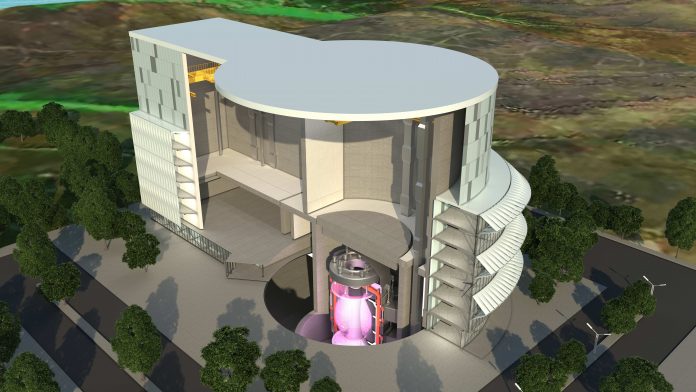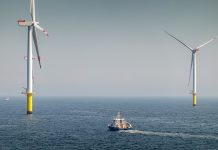Find out in this interview how the United Kingdom Atomic Energy Authority (UKAEA) implements the UK’s fusion energy strategy
In November 2023, Nuclear and Networks Minister Andrew Bowie signed a partnership with the U.S. to drive global fusion energy growth. According to Minister Bowie, international cooperation is essential to move forward with fusion and reach the goal of a commercial grid-ready fusion reactor by 2040. (1)
“The UK and the US are world-leaders in this technology, and pooling our resources will unlock new private sector investment. This bold new partnership will help turn our fusion ambitions into reality,” Minister Bowie said. (1)
UK Government plans announced in October 2023 will provide thousands of people in the UK with the opportunity to train for a career in cutting-edge fusion technology. Measures include over 2,200 training opportunities nationwide, a fuel cycle testing facility dedicated to commercialising the technology and funding for infrastructure development for private fusion companies. (2)
The UK Government also announced in September 2023 up to £650 million for UK research and innovation alternatives to Euratom research and technology. According to Minister Bowie, the investment is transformational for the UK, offering the most significant potential for job creation, investment and, in the end, economic growth. (3)
The UK’s fusion energy strategy
United Kingdom Atomic Energy Authority (UKAEA) is the UK’s national organisation responsible for the research and delivery of sustainable fusion energy. It is an executive non-departmental public body, sponsored by the Department for Energy Security and Net Zero.
Fusion energy has great potential to deliver safe, sustainable, low carbon energy for generations to come. It is based on the same processes that power the Sun and stars, and would form part of the world’s future energy mix. Achieving this is a major technical challenge that involves working at the forefront of science, engineering, and technology. We spoke with UKAEA to learn more.
How could fusion, which involves combining two different types of hydrogen molecules and heating them to high temperatures that cause them to release and generate energy, create electricity in the long term?
Fusion energy involves combining two different types of hydrogen molecules and heating them to high temperatures that cause them to release and generate energy, therefore creating electricity in the long term.
The most common fuels considered for fusion power plants are deuterium and tritium, both of which are isotopes of hydrogen. They are heated to form a controlled plasma at extreme temperatures – ten times hotter than the core of the Sun. In a deuterium-tritium fusion reaction, the nuclei of a deuterium atom and tritium atom fuse. This creates a helium nucleus and a highly energetic free neutron, whose energy can be harnessed to produce heat and electricity.
In a future power plant, it is envisaged that the fusion energy released in the form of fast-moving neutrons will be slowed down in special blankets within the vessel walls. The resultant heat would generate electricity in just the same way as existing power stations, where the heat is used to raise steam, driving turbines to produce electricity. The possibility of using the energy more directly has been considered but does not seem practical at this time.
To what degree is fusion far more efficient than coal, oil, or gas combustion and capable of producing almost limitless amounts of clean electricity?
Fusion produces more energy per gramme of fuel than any other process that could be achieved on Earth. Fusion could generate four times more energy per kilogramme of fuel than nuclear fission and nearly four million times more energy per kg than burning oil or coal.
A large fusion power station generating 1,500 megawatts of electricity would use approximately 600 grams of tritium and 400 grams of deuterium each day (1 kg in total). This compares with a daily consumption of around 10,000 tonnes of fuel in a coal power station of a similar size.
Tell us about UKAEA’s research priorities in fusion energy and technologies to position the UK as an innovator in sustainable fusion power
UKAEA is implementing the UK’s £650 million Fusion Futures Programme, the UK’s alternative programme to associating with Euratom R&T, to support the UK Fusion Strategy. The Programme entails establishing new facilities at UKAEA’s Culham Campus in Oxfordshire to facilitate the advancement of new technologies and expand fusion fuel cycle capabilities.
The Programme aims to foster world-leading innovation while also stimulating general industry capacity through international collaboration and the development of future fusion power plants. Additionally, a fusion skills package will be introduced focusing on nurturing expertise across a spectrum of disciplines and levels.
In 2021, UKAEA opened its Fusion Technology Facility near Rotherham in South Yorkshire, to develop and test materials and components for future fusion powerplants.
UKAEA also undertakes cutting-edge work with academia, other research organisations and the industrial supply chain in a wide spectrum of areas, including robotics and materials.
JET’s decommissioning and repurposing (JDR) is a world-first programme, which will contribute scientific and engineering knowledge and insight into the development of future fusion machines and powerplants. Projects range from robotic disassembly of JET’s tokamak, research into the recovery of tritium for reuse as fusion fuel, and facilitating further development at Culham Campus, which will entrench UKAEA’s home as a hub of global fusion research.
To what extent will fusion continue to play a role on the global stage, with pledges made at COP28 for developing fusion as a sustainable and low-carbon energy source for future generations?
With increasing concerns over climate change and finite supplies of fossil fuels, better ways to meet the growing energy demand are needed. The benefits of fusion power make it an extremely attractive option:
- No carbon emissions. The only by-products of fusion reactions are small amounts of helium, an inert gas which can be safely released without harming the environment.
- Abundant fuels. Deuterium can be extracted from water and tritium will be produced inside the power station from lithium, an element abundant in the Earth’s crust and seawater. Even with the widespread adoption of fusion power stations, these fuel supplies would last for many thousands of years.
- Energy efficiency. One kilogramme of fusion fuel could provide the same amount of energy as 10 million kilogrammes of fossil fuel. A 1 Gigawatt fusion power station will need less than one tonne of fuel during a year’s operation.
- Less radioactive waste than fission. There is no radioactive waste by-product from the fusion reaction. Only reactor components become radioactive; the activity level depends on the structural materials used. Research is being carried out on suitable materials to minimise decay times as much as possible.
- Safety. A large-scale nuclear accident is not possible in a fusion reactor. The amounts of fuel used in fusion devices are very small (about the weight of a postage stamp at any one time). Furthermore, as the fusion process is difficult to start and keep going, there is no risk of a runaway reaction, which could lead to a meltdown.
- Reliable power. Fusion power plants will be designed to produce a continuous supply of large amounts of electricity. Once established in the market, costs are predicted to be broadly similar to other energy sources.
- UKAEA’s fusion machines include MAST-Upgrade (Mega Amp Spherical Tokamak) and the JET (Joint European Torus) research facility. JET’s operations were funded by the UK Government from 2021 until 31st December 2023. UKAEA is delivering the transition of JET from plasma operations to repurposing and decommissioning, on behalf of the UK Government. The insights gained from this process will contribute to advancing sustainable future fusion power plants.
References
- https://www.gov.uk/government/news/uk-and-us-form-major-partnership-to- accelerate-global-fusion-energy-development
- https://www.gov.uk/government/news/thousands-of-new-training-places-created-as-part-of-650-million-fusion-package
- https://www.gov.uk/government/news/government-announces-up-to-650-million-for-uk-alternatives-to-euratom-rt











